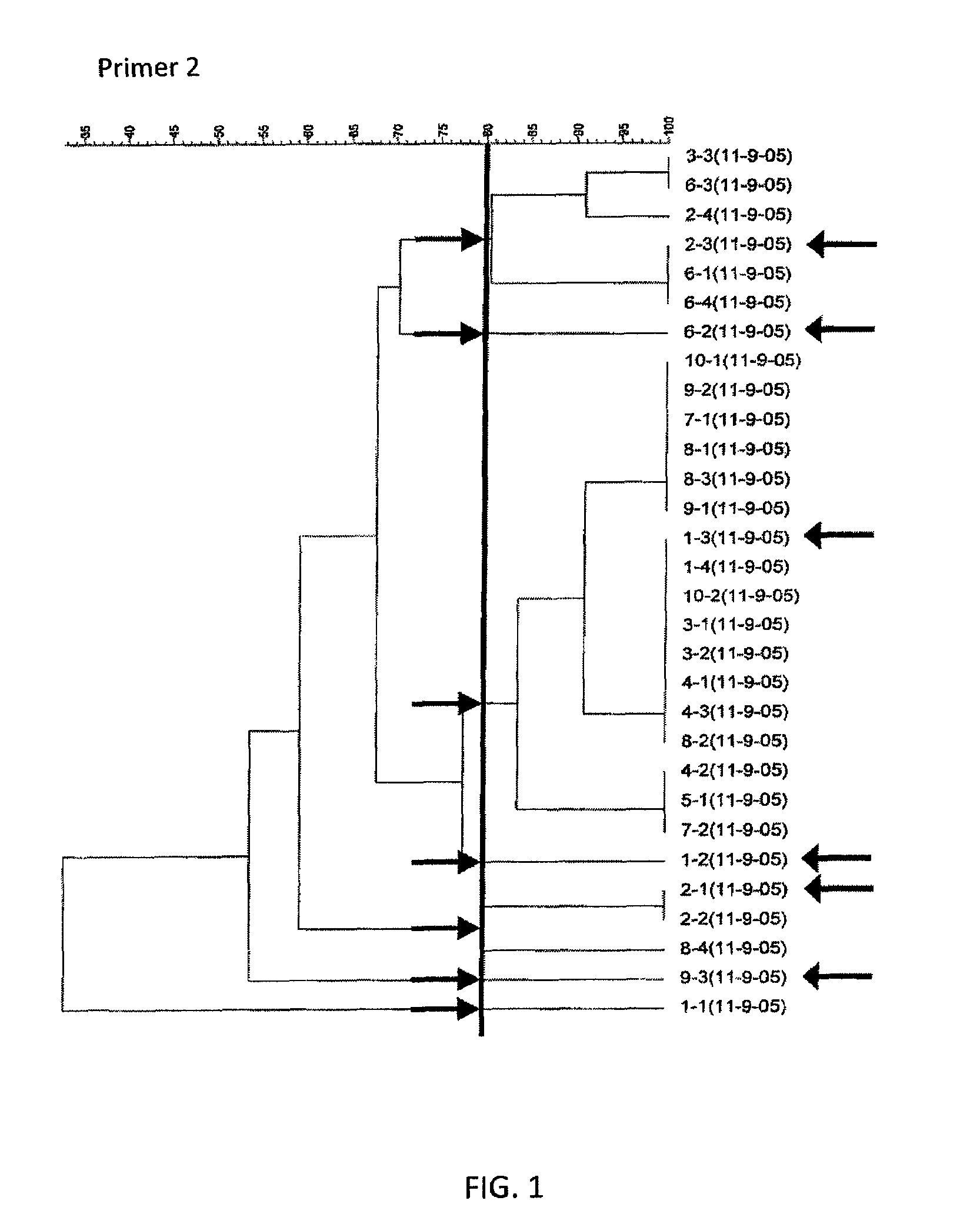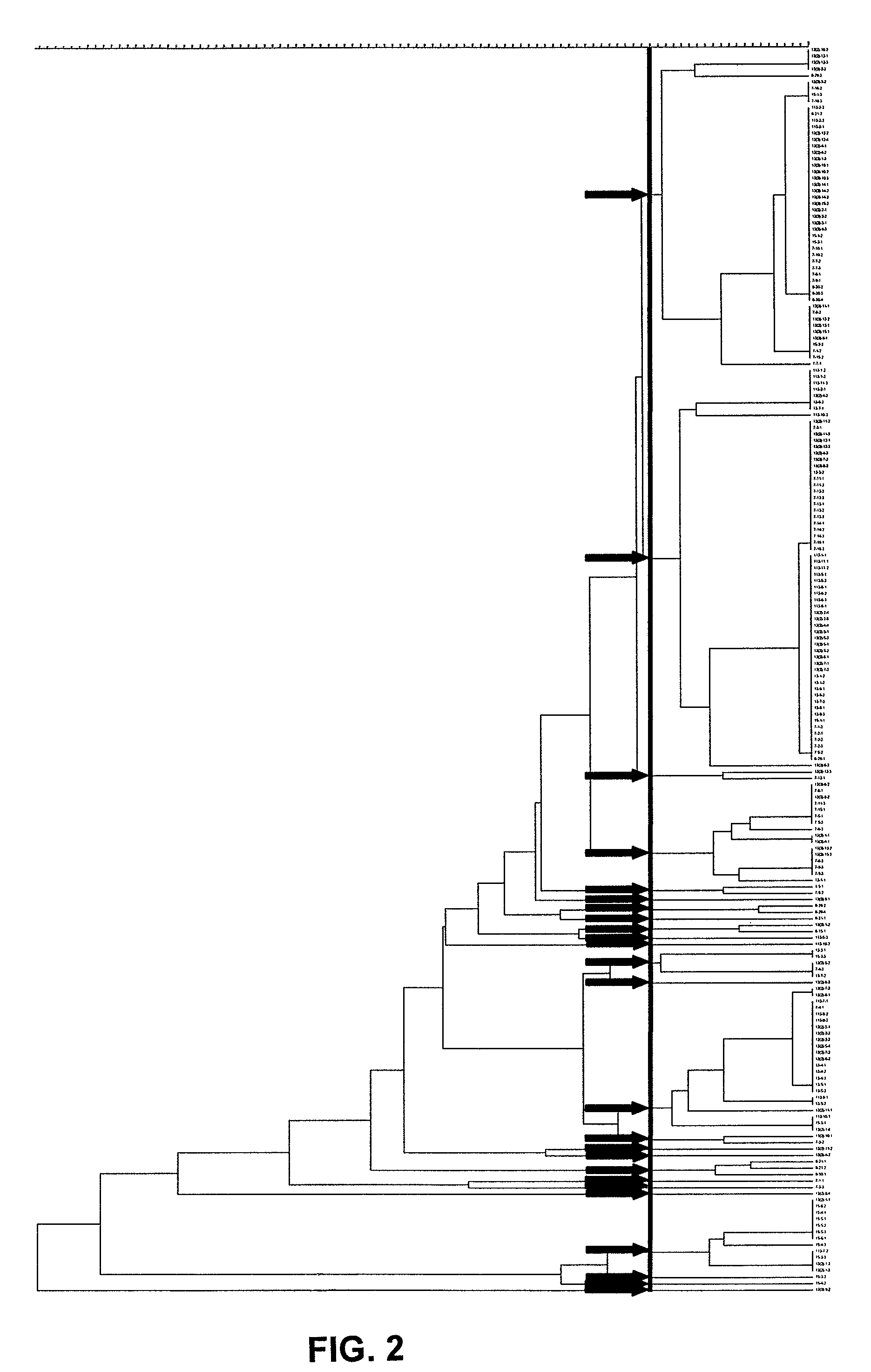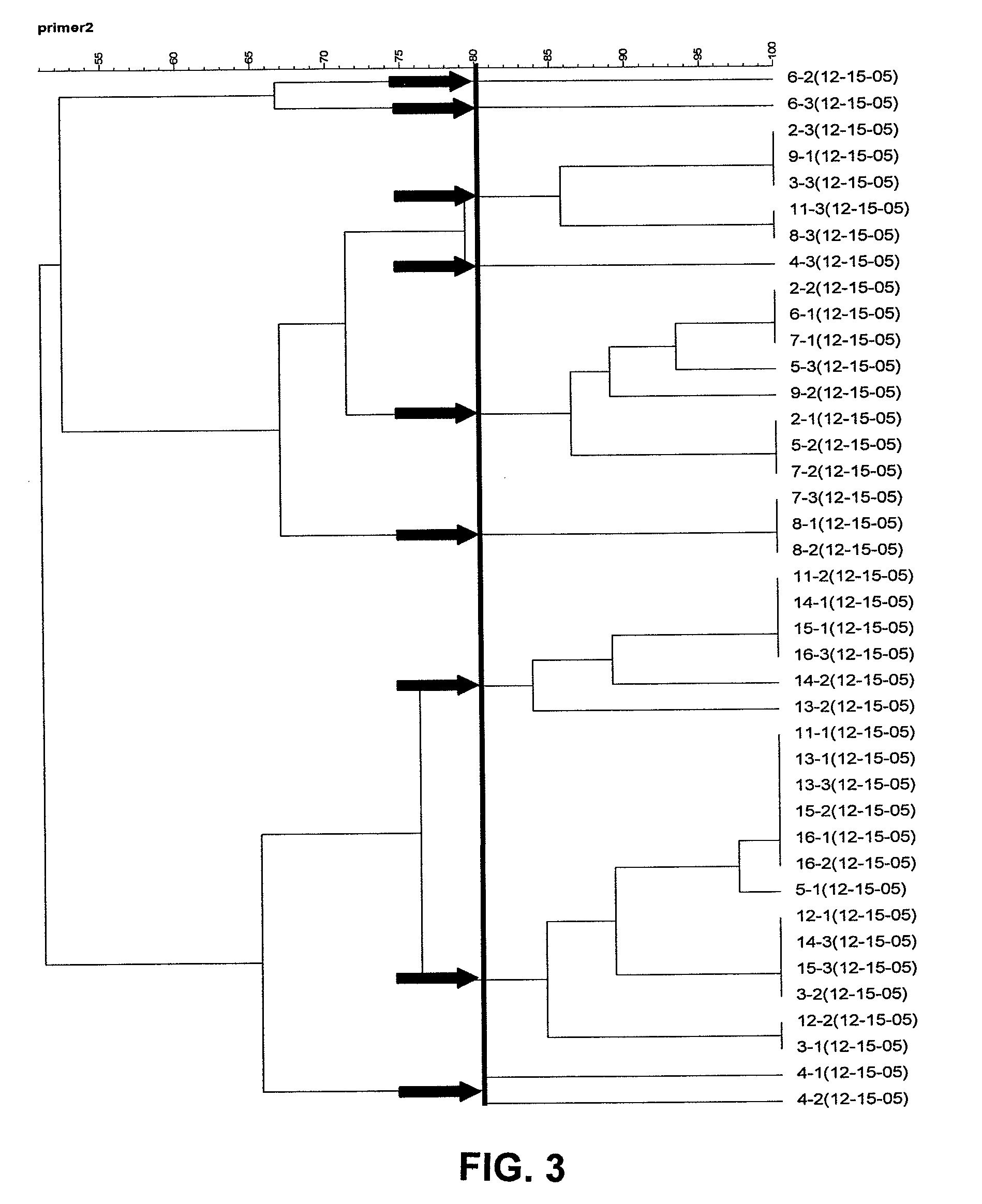Methods of treating pigs with Bacillus strains
a technology of bacillus and pigs, which is applied in the field of controlling disease in pigs, can solve the problems of lack lack of efficacy of commercial vaccines for i>, and limited efficacy of these therapies
- Summary
- Abstract
- Description
- Claims
- Application Information
AI Technical Summary
Benefits of technology
Problems solved by technology
Method used
Image
Examples
example 1
[0041]An initial pool of Bacillus strains were obtained from various environmental samples and a library of Bacillus strains. Bacillus strains were selected that inhibit representative members from the clusters of Clostridium. For this, tubes were seeded, each with a representative pathogen from a representative cluster. Supernatant from a Bacillus strain was added to the seeded tubes and incubated. After incubation, the optical density (OD) of control and Bacillus supernatant treated tubes was measured for each pathogen. Colonies of Bacillus that produced a lowered OD were then picked, and the Bacillus isolates were grown.
[0042]Clostridium samples were obtained and screened as follows. Clostridium samples were obtained from swabs taken from farrowing units. The swabs were taken from piglets, sows, and the environment. The samples were plated for Clostridium, and colonies were isolated. DNA was isolated from the colonies, and multiplex PCR was performed of the α-toxin gene of Clostr...
example 2
[0047]Clostridium samples were obtained and screened as is described above in Example 1. The Bacillus strains were selected and tested as is described in this example.
[0048]A total of 194 C. perfringens isolates were obtained from six sets of swab samples. The results of multiplex PCR identified 189 of the isolates as C. perfringens type A, four isolates as C. perfringens type E, and one as C. perfringens type C. RAPD PCR was performed on the pathogenic isolates to determine the relatedness among the strains. The results were then used to construct a dendrogram (shown in FIG. 2), which was used to identify unique families for screening of Bacillus strains. Isolates connected to the same branch on the right of the vertical line, drawn at 80% similarity, were considered to be members of the same family. Each of these families is indicated by an arrow.
[0049]Twenty-one representative isolates were chosen for bacteriocin screening against the strains of Bacillus shown in Table 3. The gro...
example 3
[0052]Clostridium samples were obtained and screened as is described above in Examples 1 and 2. The Bacillus strains were selected and tested as is described in this example.
[0053]A total of 40 presumptive C. perfringens isolates were obtained, using Perfringens Agar selective media, from sixteen rectal swabs. The results of multiplex PCR identified all 40 of the isolates as C. perfringens type A. Thirty-five of the isolates also contained the recently identified β2-toxin which has been correlated with GI disease in domestic animals. RAPD PCR was performed on the pathogenic isolates to determine the relatedness among the strains. The results were then analyzed to construct a dendrogram (shown in FIG. 3), which was used to select isolates for bacteriocin screening. Isolates connected to the same branch on the right of the vertical line, drawn at 80% similarity, were considered to be members of the same family. Nine families were observed and are marked with arrows. The representative...
PUM
| Property | Measurement | Unit |
|---|---|---|
| frequency | aaaaa | aaaaa |
| weight loss | aaaaa | aaaaa |
| weight | aaaaa | aaaaa |
Abstract
Description
Claims
Application Information
 Login to View More
Login to View More - R&D
- Intellectual Property
- Life Sciences
- Materials
- Tech Scout
- Unparalleled Data Quality
- Higher Quality Content
- 60% Fewer Hallucinations
Browse by: Latest US Patents, China's latest patents, Technical Efficacy Thesaurus, Application Domain, Technology Topic, Popular Technical Reports.
© 2025 PatSnap. All rights reserved.Legal|Privacy policy|Modern Slavery Act Transparency Statement|Sitemap|About US| Contact US: help@patsnap.com



